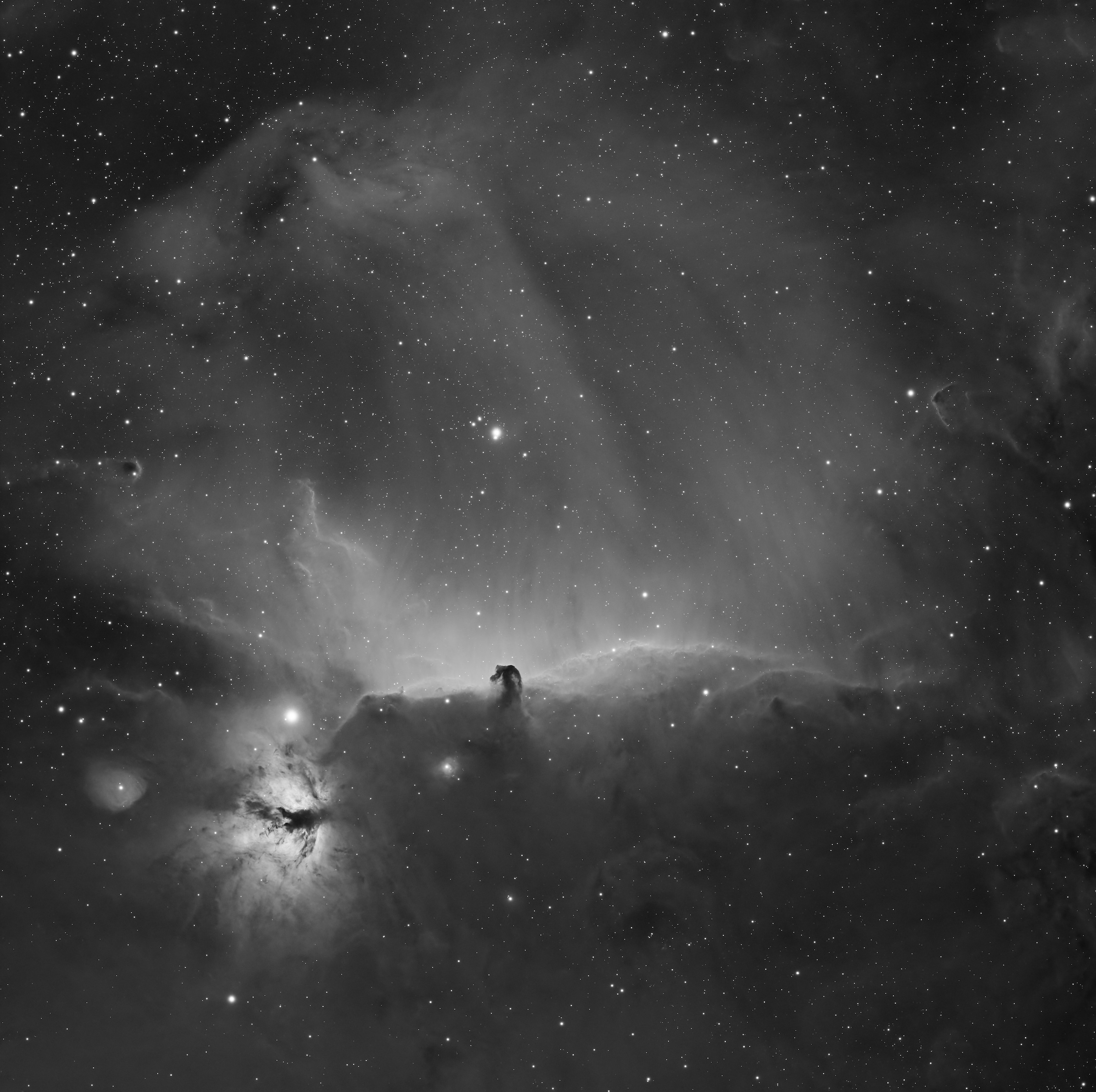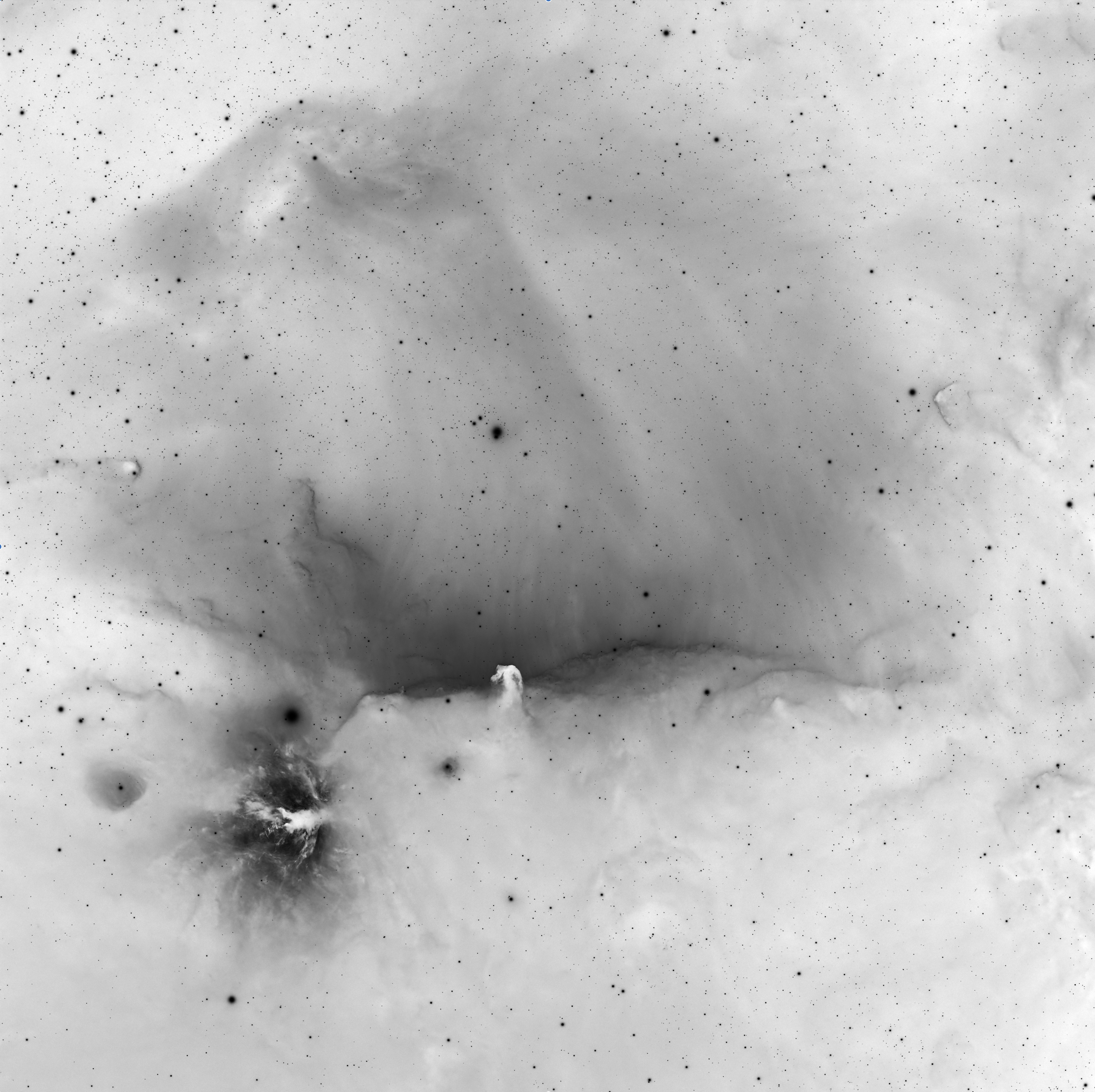Acquisition Details
| IC1848 | Hα | R | G | B |
|---|---|---|---|---|
| Frames | 53 | 19 | 17 | 17 |
| Exp. time | 300s | 300s | 300s | 300s |
| Flats | 20 | 20 | 20 | 20 |
| Darks | 20 | |||
| Bias | 15 |
Final Masters
Description
This is 🐴 IC434 🐴 mostly known by its other name: the Horsehead Nebula.
Ever seen those three almost perfectly aligned stars in the night sky during winter? The lowest star (seen from the northern hemisphere) is surrounded by a massive hydrogen cloud where stars can be formed and has a diameter of 1500 light years.
Shot this image using a Hydrogen-alpha (Hα) filter and regular red, green and blue filters.
Merging H-alpha with RGB data
This image needed a different approach. Since IC434 contains lots of Hydrogen, I shot with a Hydrogen filter rather than a Lumminance filter. This way I could filter out the details of the nebulae. After combining red, green and blue channel data, normally, you’d merge it with luminance data. Instead, I merged the hydrogen data with the red channel using PixelMath. For this, the following statement was provided on the red channel:
# PixelMath B: $T G: $T R: $T * 0.05 + Hα * 0.95
Below you can see the H-alpha master file I used

H-alpha Inverted
For most of the narrowband images I create an inverted image as well. This way details are more visible than normal. Below is the inverted Hα-master.

Astrometry Calibration
| Astrometry Job | 9023077 |
| Center (RA, Dec) | (84.980, -2.646) |
| Center (RA, hms) | 05h 39m 55.081s |
| Center (Dec, dms) | -02° 38’ 45.103” |
| Size | 2.57 x 2.57 deg |
| Radius | 1.819 deg |
| Pixel Scale | 1.56 arcsec/pixel |
Data Processing
Processing was done in PixInsight only. Steps of the process are listed below:
- DynamicBackgroundExtraction on separate channels,
- LRGBCombination on only RGB channels
- SPCC,
- Merging Ha with Red channel on RGB image using expression: $T * 0.05 + Ha * 0.95
- Rerunning SPCC again for exact spectral match of stars and therefor enhancing red channel,
- BlurXTerminator on the HaRGB-channel for correcting stars and nebulae
- SNCR noise reduction (0,70) to reduce green noise,
- BackgroundNeutralization to make sure background is correctly calibrated
- Stretched the image using HistogramTransformation
- DarkStructureEnhance on the image (0,40) to enhance horsehead nebula
- StarXTerminator (splitting stars and background),
- Adjustments with CurvesTransformation
- NoiseXTerminator on the starless image using masks for separate background and galaxy noise reduction
- Merging of the stars and starless image using PixelMath, expression: $T + HaRGB_stars
- Final adjustments with CurvesTransformation
- BlurXTerminator for reducing star size a bit
